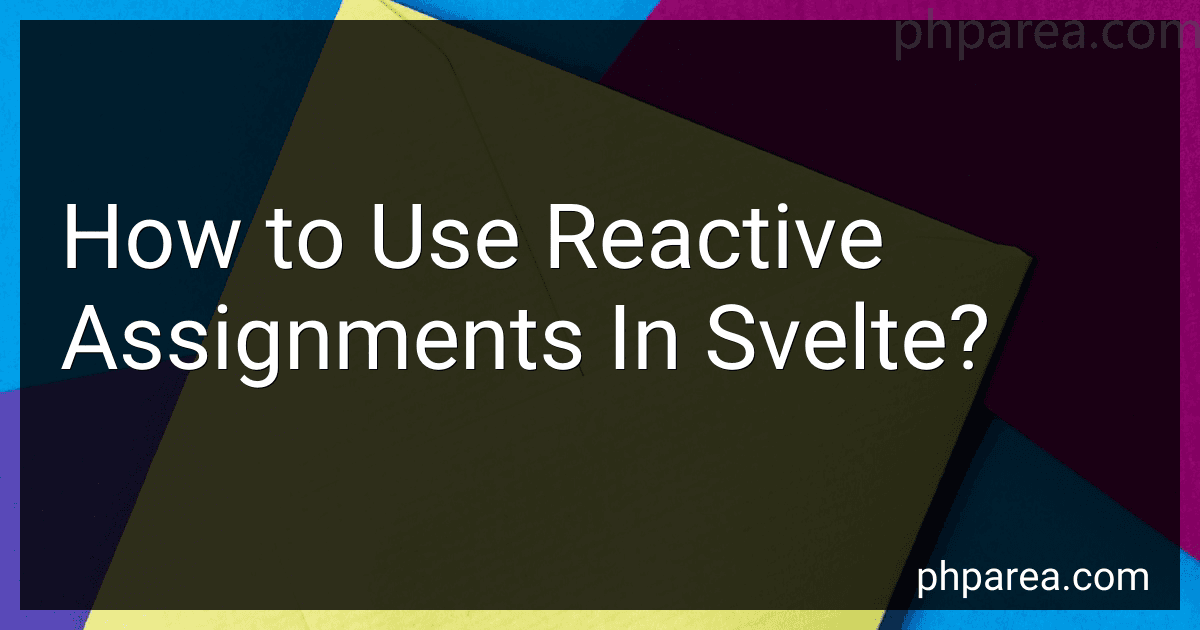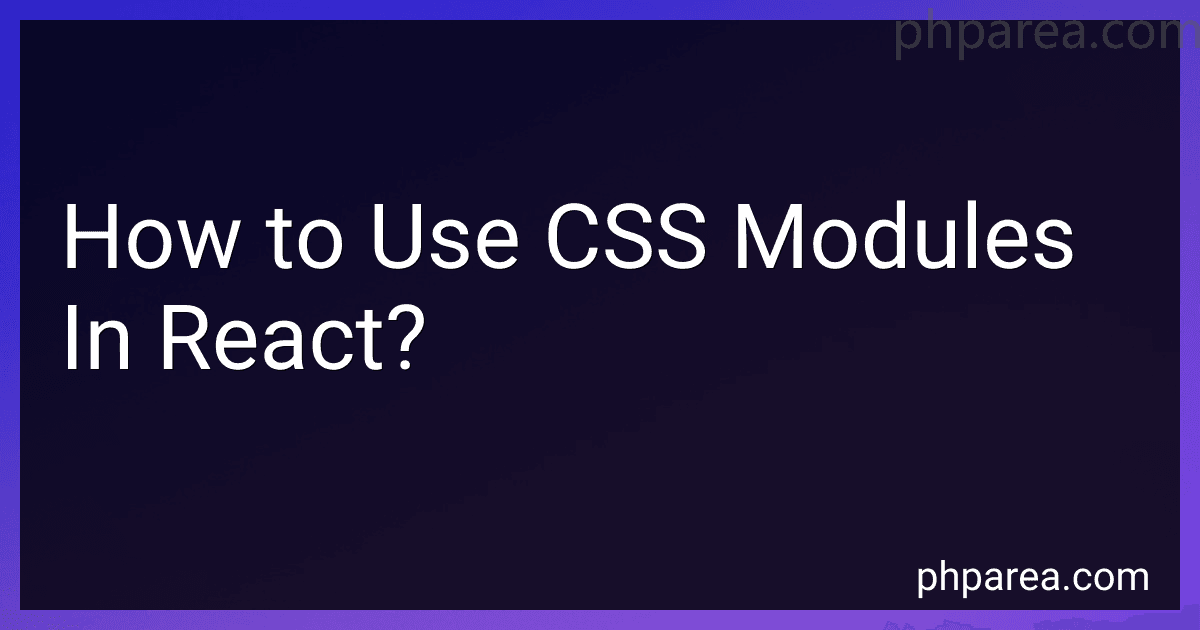Posts (page 62)
-
 5 min readReactive assignments in Svelte allow you to make parts of your component's state reactive, so that when a specific variable changes, other parts of your component are automatically updated. This makes it easy to create dynamic and responsive user interfaces without manually updating the DOM.To use reactive assignments in Svelte, you simply need to prefix a variable with the $: symbol. This tells Svelte to create a reactive assignment for that variable.
5 min readReactive assignments in Svelte allow you to make parts of your component's state reactive, so that when a specific variable changes, other parts of your component are automatically updated. This makes it easy to create dynamic and responsive user interfaces without manually updating the DOM.To use reactive assignments in Svelte, you simply need to prefix a variable with the $: symbol. This tells Svelte to create a reactive assignment for that variable.
-
 6 min readTo customize the front page in Drupal, you first need to log in to your Drupal website as an administrator. Then, go to the "Appearance" section in the admin menu and select the theme you want to customize. Within the theme settings, look for an option to customize the front page layout or content. You may be able to add custom blocks, rearrange elements, or change the styling of the front page.
6 min readTo customize the front page in Drupal, you first need to log in to your Drupal website as an administrator. Then, go to the "Appearance" section in the admin menu and select the theme you want to customize. Within the theme settings, look for an option to customize the front page layout or content. You may be able to add custom blocks, rearrange elements, or change the styling of the front page.
-
 6 min readReact Router is a powerful library that helps you manage routing in a React application. To use React Router, you first need to install it in your project by running npm install react-router-dom.Once the library is installed, you can import the necessary components from react-router-dom to set up your routing. The main components you will use are BrowserRouter, Route, and Switch.You can wrap your entire application in a BrowserRouter component to enable routing.
6 min readReact Router is a powerful library that helps you manage routing in a React application. To use React Router, you first need to install it in your project by running npm install react-router-dom.Once the library is installed, you can import the necessary components from react-router-dom to set up your routing. The main components you will use are BrowserRouter, Route, and Switch.You can wrap your entire application in a BrowserRouter component to enable routing.
-
 8 min readIn Drupal, permissions control access to different parts of the website for different user roles. To set permissions in Drupal, you first need to go to the "People" section in the admin menu and then click on "Permissions." From there, you can see a list of all the permissions available in the system. You can then assign or remove permissions for different user roles by checking or unchecking the boxes next to each permission.
8 min readIn Drupal, permissions control access to different parts of the website for different user roles. To set permissions in Drupal, you first need to go to the "People" section in the admin menu and then click on "Permissions." From there, you can see a list of all the permissions available in the system. You can then assign or remove permissions for different user roles by checking or unchecking the boxes next to each permission.
-
 7 min readIn React, routing allows you to navigate between different components while maintaining the state of your application. To implement routing in React, you can use libraries like React Router.First, you need to install React Router by running npm install react-router-dom.Next, you can use BrowserRouter component to wrap your application and specify the routes using Route component. For example, you can define routes for different components like Home, About, and Contact.
7 min readIn React, routing allows you to navigate between different components while maintaining the state of your application. To implement routing in React, you can use libraries like React Router.First, you need to install React Router by running npm install react-router-dom.Next, you can use BrowserRouter component to wrap your application and specify the routes using Route component. For example, you can define routes for different components like Home, About, and Contact.
-
 4 min readIn Svelte, you can easily bind input values by using the bind:value directive. This allows you to update the input value directly from the component's state. For example, if you have an input element like <input type="text" value={name}>, you can bind the value like this: <input type="text" bind:value={name}>. This will make sure that any changes to the name variable will automatically update the input field.
4 min readIn Svelte, you can easily bind input values by using the bind:value directive. This allows you to update the input value directly from the component's state. For example, if you have an input element like <input type="text" value={name}>, you can bind the value like this: <input type="text" bind:value={name}>. This will make sure that any changes to the name variable will automatically update the input field.
-
 8 min readCSS modules are a way to locally scope CSS in React components. This means that styles declared in one component will not affect styles in another component.To use CSS modules in React, you first need to install the necessary dependencies. You can do this by running npm install --save-dev css-loader style-loader.Once you have the dependencies installed, you can create a CSS file for your component and name it with the .module.css extension.
8 min readCSS modules are a way to locally scope CSS in React components. This means that styles declared in one component will not affect styles in another component.To use CSS modules in React, you first need to install the necessary dependencies. You can do this by running npm install --save-dev css-loader style-loader.Once you have the dependencies installed, you can create a CSS file for your component and name it with the .module.css extension.
-
 8 min readTo add users in Drupal, first log in to your Drupal website with an administrative account. Then, navigate to the Users page by clicking on the "People" link in the admin toolbar.From the Users page, click on the "Add user" button to start creating a new user account. Fill in the required fields such as username, email address, password, and user role. You can also add additional information such as first name, last name, and bio if desired.
8 min readTo add users in Drupal, first log in to your Drupal website with an administrative account. Then, navigate to the Users page by clicking on the "People" link in the admin toolbar.From the Users page, click on the "Add user" button to start creating a new user account. Fill in the required fields such as username, email address, password, and user role. You can also add additional information such as first name, last name, and bio if desired.
-
 5 min readIn React, you can use inline styles by passing a JavaScript object with CSS properties instead of a traditional CSS class name. This allows you to style elements directly within your components without the need for external CSS files. Inline styles are typically defined as an object within the component's render method, using the style attribute on the element you want to style. The keys in the object represent the CSS properties (in camelCase), and the values represent the property values.
5 min readIn React, you can use inline styles by passing a JavaScript object with CSS properties instead of a traditional CSS class name. This allows you to style elements directly within your components without the need for external CSS files. Inline styles are typically defined as an object within the component's render method, using the style attribute on the element you want to style. The keys in the object represent the CSS properties (in camelCase), and the values represent the property values.
-
 5 min readTo loop through an array in Svelte, you can use the #each block in your component template. This block allows you to iterate over each item in the array and render the desired content for each item. You can access the current item and its index using the item and index variables within the #each block. Make sure to provide a unique key prop for each item to help Svelte efficiently update the DOM when the array changes.
5 min readTo loop through an array in Svelte, you can use the #each block in your component template. This block allows you to iterate over each item in the array and render the desired content for each item. You can access the current item and its index using the item and index variables within the #each block. Make sure to provide a unique key prop for each item to help Svelte efficiently update the DOM when the array changes.
-
 8 min readTo add a contact form in Drupal, you can use the core Contact module that comes pre-installed with Drupal core. Firstly, go to the "Extend" section in your Drupal admin panel and ensure that the Contact module is enabled. Once enabled, head to the "Structure" tab and click on "Contact forms" to create a new contact form. Add fields to the form as needed, such as name, email, subject, and message.
8 min readTo add a contact form in Drupal, you can use the core Contact module that comes pre-installed with Drupal core. Firstly, go to the "Extend" section in your Drupal admin panel and ensure that the Contact module is enabled. Once enabled, head to the "Structure" tab and click on "Contact forms" to create a new contact form. Add fields to the form as needed, such as name, email, subject, and message.
-
 5 min readStyling React components can be done in a variety of ways. One common approach is to use CSS-in-JS libraries like styled-components or Emotion, which allow you to write CSS directly within your JavaScript code. Another option is to use traditional CSS files and import them into your components using the import statement. Inline styles can also be used by passing a style object directly to the style attribute of a component.
5 min readStyling React components can be done in a variety of ways. One common approach is to use CSS-in-JS libraries like styled-components or Emotion, which allow you to write CSS directly within your JavaScript code. Another option is to use traditional CSS files and import them into your components using the import statement. Inline styles can also be used by passing a style object directly to the style attribute of a component.